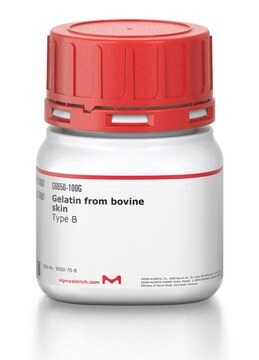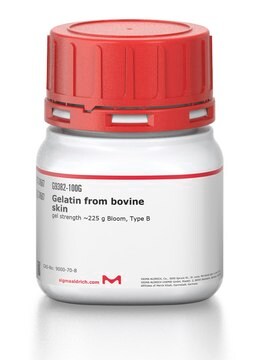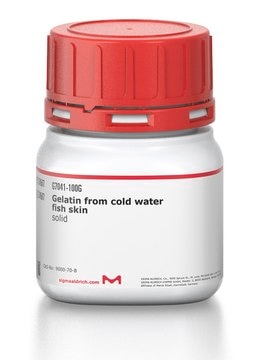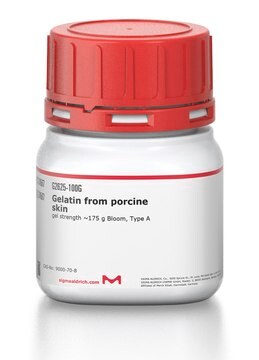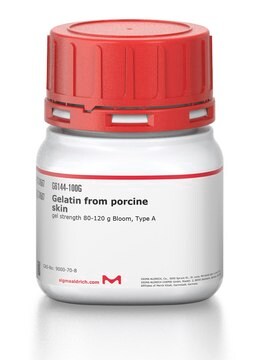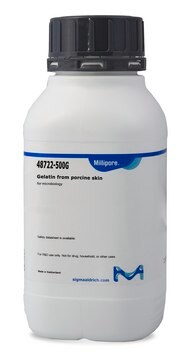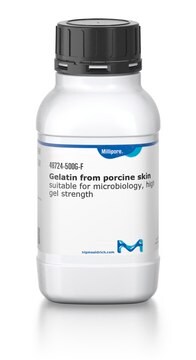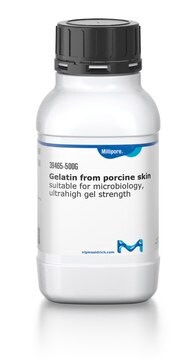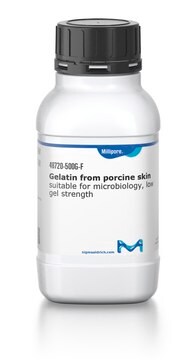G9391
Gelatin from bovine skin
Type B, powder, BioReagent, suitable for cell culture
About This Item
Produtos recomendados
fonte biológica
bovine skin
Nível de qualidade
esterilidade
sterile
tipo
Type B
linha de produto
BioReagent
forma
powder
embalagem
pkg of 100 g
pkg of 500 g
técnica(s)
cell culture | mammalian: suitable
força do gel
~225 g Bloom
solubilidade
H2O: soluble 50 mg/mL, hazy to strongly hazy, faintly yellow to yellow
Condições de expedição
ambient
temperatura de armazenamento
room temp
Procurando produtos similares? Visita Guia de comparação de produtos
Categorias relacionadas
Descrição geral
Aplicação
- in coating cell culture to improve attachment of cells,
- in PCR to stabilize Taq DNA, as a blocking reagent in Western blotting, ELISA, and immunochemistry,
- as a component of media for species differentiation in bacteriology
- as a biocompatible polymer
- as a delivery vehicle for the release of active biomolecules
- in the generation of scaffolds for tissue engineering applications.
- to study long-chain fatty acid-induced changes in gene expression in neonatal cardiac monocytes
- to study to test mobilization of capillary endothelium in-vitro induced by effectors of angiogenesis in vivo
Ações bioquímicas/fisiológicas
Componentes
Atenção
Nota de preparo
Código de classe de armazenamento
11 - Combustible Solids
Classe de risco de água (WGK)
nwg
Ponto de fulgor (°F)
Not applicable
Ponto de fulgor (°C)
Not applicable
Equipamento de proteção individual
Eyeshields, Gloves, type N95 (US)
Certificados de análise (COA)
Busque Certificados de análise (COA) digitando o Número do Lote do produto. Os números de lote e remessa podem ser encontrados no rótulo de um produto após a palavra “Lot” ou “Batch”.
Já possui este produto?
Encontre a documentação dos produtos que você adquiriu recentemente na biblioteca de documentos.
Os clientes também visualizaram
Artigos
Attachment Factors for 3-Dimensional Cell Culture
The extracellular matrix (ECM) is secreted by cells and surrounds them in tissues.
Cancer stem cell media, spheroid plates and cancer stem cell markers to culture and characterize CSC populations.
Nossa equipe de cientistas tem experiência em todas as áreas de pesquisa, incluindo Life Sciences, ciência de materiais, síntese química, cromatografia, química analítica e muitas outras.
Entre em contato com a assistência técnica


